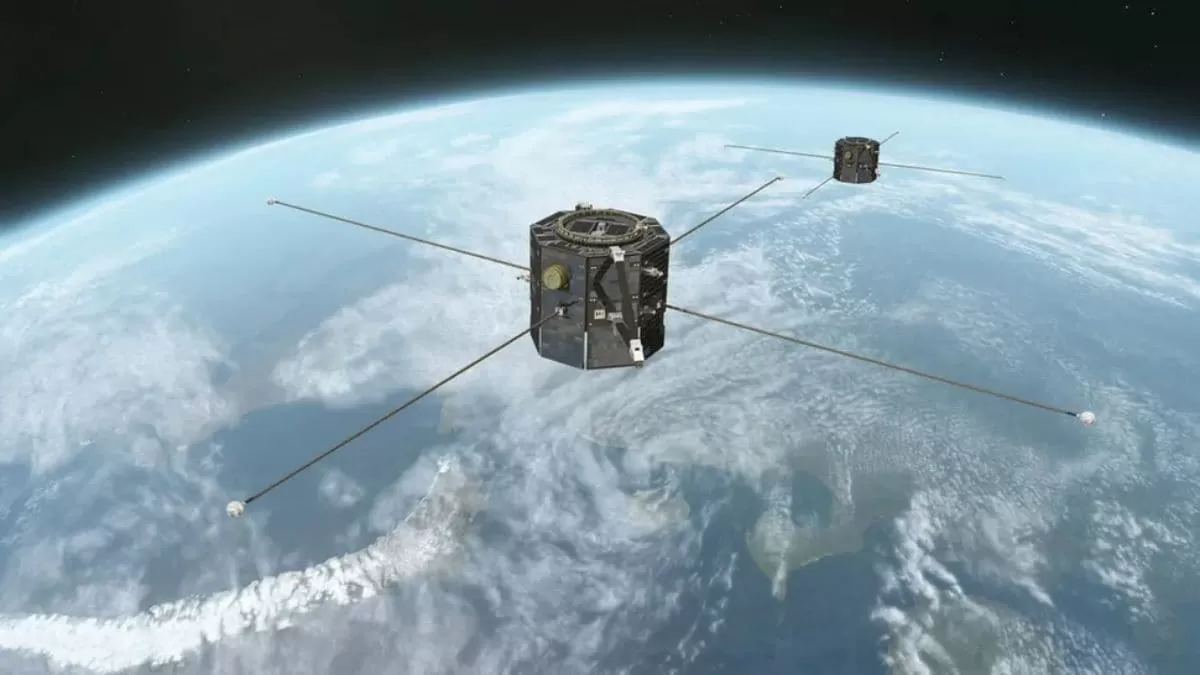NASA’s TRACERS Satellites: A Revolutionary Mission to Study Space Weather and Protect Vital Systems
Space weather, a term used to describe the conditions in space that can affect Earth and its technological systems, has become a growing concern in recent years. With the increasing reliance on satellites, power grids, and other vital systems, the need for accurate predictions and understanding of space weather has become crucial. To address this issue, NASA has launched a groundbreaking mission called TRACERS (Tandem Reconnection and Cusp Electrodynamics Reconnaissance Satellites) that will study magnetic storms and solar wind effects in Earth’s polar cusps. This mission aims to improve our understanding of space weather and provide valuable insights into magnetic reconnection, ultimately helping to protect our vital systems from the hazards of intense solar activity.
The TRACERS mission consists of two identical satellites that will fly in tandem through Earth’s polar cusps, the regions where the planet’s magnetic field lines converge and allow solar wind particles to enter the atmosphere. These particles can cause magnetic storms, which can disrupt satellite communications, damage power grids, and even pose a threat to astronauts in space. By studying these polar cusps, the TRACERS satellites will provide a unique perspective on the processes that drive space weather and help us better predict and prepare for its effects.
The TRACERS satellites are equipped with state-of-the-art instruments that will measure the particles and magnetic fields in the polar cusps with unprecedented accuracy. These instruments include the Electron Drift Instrument (EDI), which will measure the electric and magnetic fields in the cusp region, and the SupraThermal Ion Imager (STII), which will measure the energy and direction of ions in the cusp region. These instruments will work together to provide a comprehensive view of the complex processes that occur in the polar cusps.
One of the main goals of the TRACERS mission is to study magnetic reconnection, a process that occurs when the magnetic field lines from the Sun and Earth’s magnetic field interact and release energy. This process is responsible for the formation of the aurora borealis and can also cause intense space weather events. By studying magnetic reconnection in the polar cusps, the TRACERS mission will provide new insights into this phenomenon and help us better understand and predict its effects on Earth.
In addition to studying magnetic reconnection, the TRACERS mission will also provide valuable data on the solar wind, a stream of charged particles that flows from the Sun and interacts with Earth’s magnetic field. This interaction can cause disturbances in the magnetic field, leading to space weather events. By studying the solar wind in the polar cusps, the TRACERS satellites will help us better understand its effects on Earth and improve our ability to predict and prepare for space weather events.
The data collected by the TRACERS satellites will not only benefit scientists and researchers, but also have practical applications for everyday life. By improving our understanding and predictions of space weather, the TRACERS mission will help protect our vital systems, such as satellites and power grids, from the damaging effects of intense solar activity. This will not only save billions of dollars in potential damages but also ensure the safety of astronauts in space.
The TRACERS mission is a collaborative effort between NASA and the University of California, Berkeley, with support from the European Space Agency and the Japan Aerospace Exploration Agency. The mission was launched on March 25, 2021, from the Vandenberg Air Force Base in California, and the satellites are expected to operate for two years. The data collected by the TRACERS satellites will be made available to the public and will be used to improve our understanding of space weather and its effects on Earth.
In conclusion, the TRACERS mission is a groundbreaking endeavor that will provide valuable insights into space weather and its effects on Earth. By studying the polar cusps, the TRACERS satellites will improve our understanding of magnetic storms and solar wind effects, ultimately helping us better predict and prepare for space weather events. This mission is a significant step towards protecting our vital systems and ensuring the safety of astronauts in space. With the TRACERS satellites in orbit, we can look forward to a safer and more resilient future in the face of intense solar activity.

